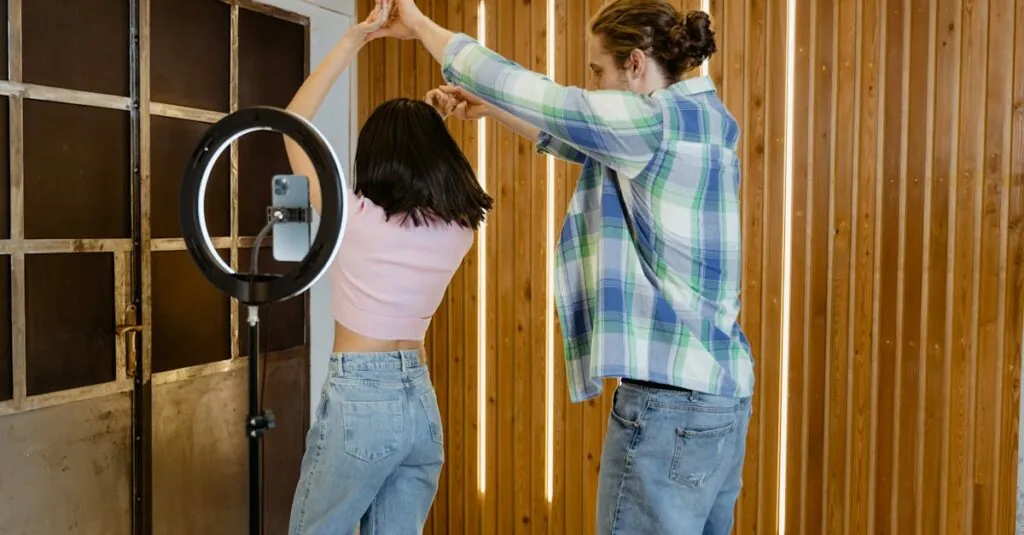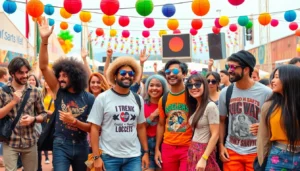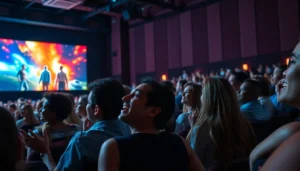Table of Contents
ToggleIn the age of social media, viral dance moves have taken the world by storm, turning everyday folks into dance floor legends overnight. Whether it’s the latest TikTok sensation or a throwback to a classic YouTube hit, these moves have a knack for igniting creativity and sparking joy. Who wouldn’t want to bust a move that could land them a spot on the trending page?
Overview of Viral Dance Moves
Viral dance moves capture attention across social media platforms. These choreographed routines often emerge from catchy songs or popular trends. Each dance move showcases unique styles and techniques, allowing dancers to express individuality. Moves like the Floss and Renegade gained enormous traction, illustrating how a simple gesture can lead to widespread fame.
Emerging from platforms such as TikTok and YouTube, these dances encourage participation from a diverse audience. Participants range from seasoned dancers to everyday individuals, all eager to take part in the trend. Consistent practice enhances performance, making the dances visually appealing.
Numerous influencers and celebrities contribute to the popularity of viral dance moves, adding to their visibility. Their participation inspires others to join in, further amplifying the trend. For example, celebrities like Charli D’Amelio turned dance challenges into global phenomena.
Choreography trends often reflect cultural moments or social movements, connecting people through shared experiences. This connection creates a sense of community around dance challenges. Dancers enhance their skills by learning intricate routines, showcasing creativity and talent.
Data shows that viral dances can reach millions of views within days, making them a powerful tool for self-expression. Engaging with these trends can lead to unexpected opportunities, such as collaborations and brand partnerships. Enthusiastic participants regularly update their performances, ensuring freshness in content.
Ultimately, viral dance moves stand as a significant part of the social media landscape. These movements foster joy and creativity, transforming the way people interact through dance.
Historical Context
Viral dance moves have a rich history shaped by cultural changes and technological advancements. Social media platforms provide a space where these trends can rapidly gain momentum.
The Evolution of Dance Trends
Dance trends evolve over time, reflecting the music and cultural landscape. In the 1970s, disco dancing gained popularity, introducing synchronized movements and group performances. The 1980s brought breakdancing and street dance influences, with MTV showcasing these new styles. The rise of hip-hop in the 1990s made way for intricate choreography and creative expression. Fast forward to the 2000s, and YouTube transformed how dance moves were shared, paving the way for the viral nature seen today. Platforms like TikTok now spark quick, catchy dances such as the Renegade, allowing users to participate immediately.
Key Influencers in Dance Culture
Influencers significantly shape dance culture by introducing new moves and engaging followers. Celebrities like Beyoncé and Justin Bieber often showcase dances that inspire millions. TikTok stars such as Charli D’Amelio accelerate trends, bringing attention to emerging choreography. Dance crews, including the Jabbawockeez, set standards for technique and performance, guiding amateur dancers. Each influencer captures the essence of their respective styles, prompting diverse audiences to join in. As these influencers continue to redefine dance culture, audiences around the world participate actively, marking their episodic influence on viral dance trends.
Popular Viral Dance Moves
Viral dance moves captivate audiences, drawing in a diverse range of participants eager to join the latest trend. Each dance brings its unique flair and energy to the social media landscape.
The Renegade
The Renegade dance originated from a viral TikTok challenge in 2019. Jalaiah Harmon, a young dancer, created this move, showcasing a series of sharp, rhythmic gestures. It quickly gained popularity, thanks to influencers and celebrities sharing their versions. The choreography consists of specific arm and body movements that sync with the beat of the song “Lottery” by K Camp. This dance exemplifies how creativity can resonate globally, inspiring millions to replicate and modify it in their unique ways. Engaging with the Renegade fosters a sense of community as participants share their performances across social platforms.
The Floss
The Floss dance gained prominence through viral videos in 2018. It features a simple yet distinctive movement where the dancer swings hips and arms in opposite directions. Players from the video game “Fortnite” popularized this move, exposing it to a broader audience. The ease of learning it encourages participants of all ages to get involved. Participants often merge the Floss with other dances or personalize it, showcasing their creativity. This dance exemplifies how even a single, memorable move can capture the public’s imagination, fueling widespread engagement on social media.
The Woah
The Woah became a signature move in Hip-Hop culture, gaining traction around 2019. Originating in music videos and performances, it includes a sudden arm drop paired with a momentary pause, creating a striking visual effect. Artists like Lil Uzi Vert helped fuel its popularity, embedding it in their routines and urging fans to replicate it. Engaging with the Woah enhances dancers’ connection to trendy music, allowing for spontaneous expressions of excitement. This infectious move encourages social media users to showcase their takes, amplifying its reach and reinforcing its status as a viral phenomenon.
The Impact of Social Media
Viral dance moves thrive in the realm of social media, fundamentally altering how people engage with dance and entertainment.
Platforms that Amplify Dance Trends
Popular platforms like TikTok and YouTube serve as launching pads for viral dance trends. Users upload engaging content, ensuring wide visibility. TikTok, with its short video format, encourages creativity, allowing choreographers to reach vast audiences quickly. YouTube hosts longer tutorials, providing step-by-step breakdowns of viral moves. Both platforms foster a sense of community, where dancers share tips and variations. This interactive environment leads to rapid dissemination and adaptation of dance styles, driving trends to dynamic heights. Social media analytics underscore the ability of these platforms to reach millions within days, establishing them as critical players in dance culture.
The Role of Challenges and Hashtags
Dance challenges and hashtags create powerful engagement on social media. Popular challenges invite users to participate, transforming them from casual viewers into dancing participants. Hashtags, such as #RenegadeChallenge, help categorize content, making it easily discoverable. Participants often showcase their own interpretations of trending dances, leading to a diverse range of performances. This collective participation fosters a sense of belonging, as users share in the excitement of mastering a move. Engagement metrics demonstrate that challenges boost viewership exponentially, driving more users to join and create their content. With each new challenge, the cycle of creativity and visibility continues, amplifying the impact of dance trends.
Viral dance moves have undeniably reshaped the landscape of social media and self-expression. They bridge the gap between professional dancers and everyday individuals, creating a unique platform for creativity and connection. As influencers and celebrities continue to introduce new trends, the dance community thrives on participation and collaboration.
The excitement surrounding these moves not only fosters joy but also encourages individuals to embrace their unique styles. With each viral trend, there’s a chance for recognition and a sense of belonging within a vibrant community. As technology evolves, so will the ways people share and celebrate dance, ensuring that this dynamic art form remains at the forefront of cultural expression.







